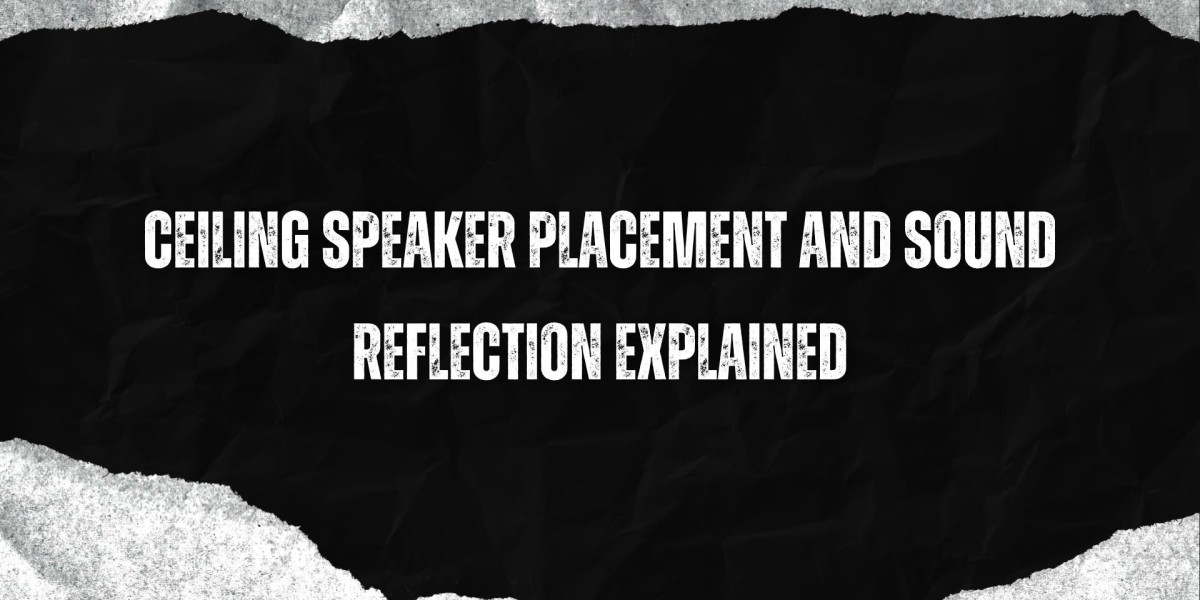Sound is not just about volume; it is about clarity, balance, and immersion. In any space, audio behaves differently depending on surfaces, ceiling height, room shape, and the placement of speakers. Reflected sound can enhance or degrade the listening experience. For example, in a home theater, poorly reflected sound can make dialogue hard to understand, while in a corporate lobby, echoes can make announcements unintelligible.
Ceiling speakers are an excellent choice for clean, unobtrusive installation, but their effectiveness heavily relies on placement and consideration of reflection. Using a ceiling speaker placement Guide ensures that every note, dialogue, and effect reaches listeners as intended.
Understanding Sound Reflection
Sound reflection occurs when audio waves bounce off surfaces like walls, ceilings, and floors. While some reflection can enrich the listening experience by adding depth, too much can create:
Echo: A noticeable repetition of sound that interferes with clarity.
Reverb: A prolonged tail of sound that can blur audio, especially in speech or music.
Phase issues: When multiple reflected waves interfere with direct sound, creating uneven frequency response.
In spaces with hard surfaces, such as glass, tile, or concrete, reflection becomes more pronounced. Proper ceiling speaker placement is crucial to minimize negative effects while maintaining full coverage.
Why Ceiling Speaker Placement Matters
Ceiling speakers are often chosen for their aesthetic appeal and space-saving design. However, without proper planning, their placement can exacerbate reflection issues. Correct placement:
Ensures even sound distribution across the listening area.
Reduces unwanted echoes by positioning speakers away from reflective surfaces.
Optimizes sound clarity for dialogue, music, and multimedia content.
Supports consistent volume levels throughout the room.
A ceiling speaker placement Guide considers room dimensions, seating arrangements, and surface materials to create an audio system that balances direct and reflected sound.
Key Factors Affecting Sound Reflection
1. Room Shape and Size
Rectangular rooms can create standing waves that amplify certain frequencies.
Irregular shapes may scatter sound unevenly, affecting coverage.
Larger spaces often require more speakers strategically placed to avoid dead zones.
2. Surface Materials
Hard surfaces reflect more sound, potentially causing echo and reverb.
Soft materials like curtains, carpets, and acoustic panels absorb sound, reducing reflections.
Balanced use of reflective and absorptive materials is essential.
3. Ceiling Height
High ceilings allow sound to travel farther before reflecting, which can delay audio perception.
Low ceilings can create strong reflections if speakers are too close to walls or other surfaces.
4. Speaker Orientation
Ceiling speakers with adjustable tweeters can direct sound toward listening areas, minimizing unwanted reflections.
Angled placement may improve clarity in large or complex spaces.
Strategies for Effective Ceiling Speaker Placement
1. Use a Grid Pattern
Evenly spaced speakers prevent uneven coverage and minimize hotspots or dead zones. This method helps maintain a balanced audio experience in both small and large spaces.
2. Consider Reflection Points
Identify major reflective surfaces, such as walls and glass panels, and avoid positioning speakers where reflections can interfere with listening zones. Acoustic panels or diffusers can also be installed to manage reflections.
3. Optimize Height and Angling
Place speakers at a height and angle that delivers direct sound to listeners while controlling reflected waves. For example, in home theaters, ceiling speakers for surround sound are often angled toward seating areas to create immersive audio without harsh echoes.
4. Implement Zoning
In commercial or multi-purpose spaces, zoning allows control over which areas receive sound. Properly zoned audio reduces overall volume and reflection in sensitive areas while maintaining coverage in main listening zones.
5. Balance Absorption and Reflection
Combining reflective surfaces with absorptive treatments ensures that sound retains richness without becoming muddled. Strategically placed carpets, curtains, or wall panels can absorb excess reflections.
Common Mistakes to Avoid
Placing speakers too close to reflective surfaces: This causes harsh echoes and reduces clarity.
Ignoring room acoustics: Relying solely on speaker power without considering reflections often results in poor sound quality.
Overcrowding speakers: Too many speakers too close together can cause phase cancellation.
Neglecting listener positions: Direct sound should reach the primary listening area without obstruction.
Benefits of Proper Planning
When ceiling speakers are placed with reflection in mind, the results are transformative:
Enhanced clarity: Dialogue, music, and sound effects become crisp and intelligible.
Balanced sound: No area is too loud or too quiet, providing a uniform experience.
Immersive listening: Proper reflections add depth without causing echo.
Professional appearance: Discreet ceiling speakers maintain aesthetic integrity while delivering superior audio.
How XTEN-AV Helps
XTEN-AV provides tools and solutions that simplify ceiling speaker placement and acoustic planning. AV professionals can design systems that:
Calculate optimal speaker positions based on room size and shape.
Predict reflection points and plan mitigation strategies.
Integrate zoning and control systems for multi-purpose environments.
Visualize coverage and ensure even sound distribution throughout the space.
With XTEN-AV, designing an effective ceiling speaker system becomes more precise, efficient, and reliable.
Conclusion
Ceiling speaker placement is not just about aesthetics or convenience. It directly impacts the quality, clarity, and balance of sound in any space. Understanding and managing sound reflection is crucial for achieving the best audio experience. A ceiling speaker placement Guide helps professionals plan for even coverage, minimize unwanted reflections, and optimize every listening area.
XTEN-AV offers intelligent tools and expertise that make it easier to implement these principles, whether for home theaters, corporate spaces, or commercial venues. Proper planning ensures that every note, announcement, and sound effect is delivered exactly as intended, creating an immersive and professional audio environment.
Read more: https://potsgwend.livepositively.com/ceiling-speaker-placement-guide-for-gaming-lounges/






